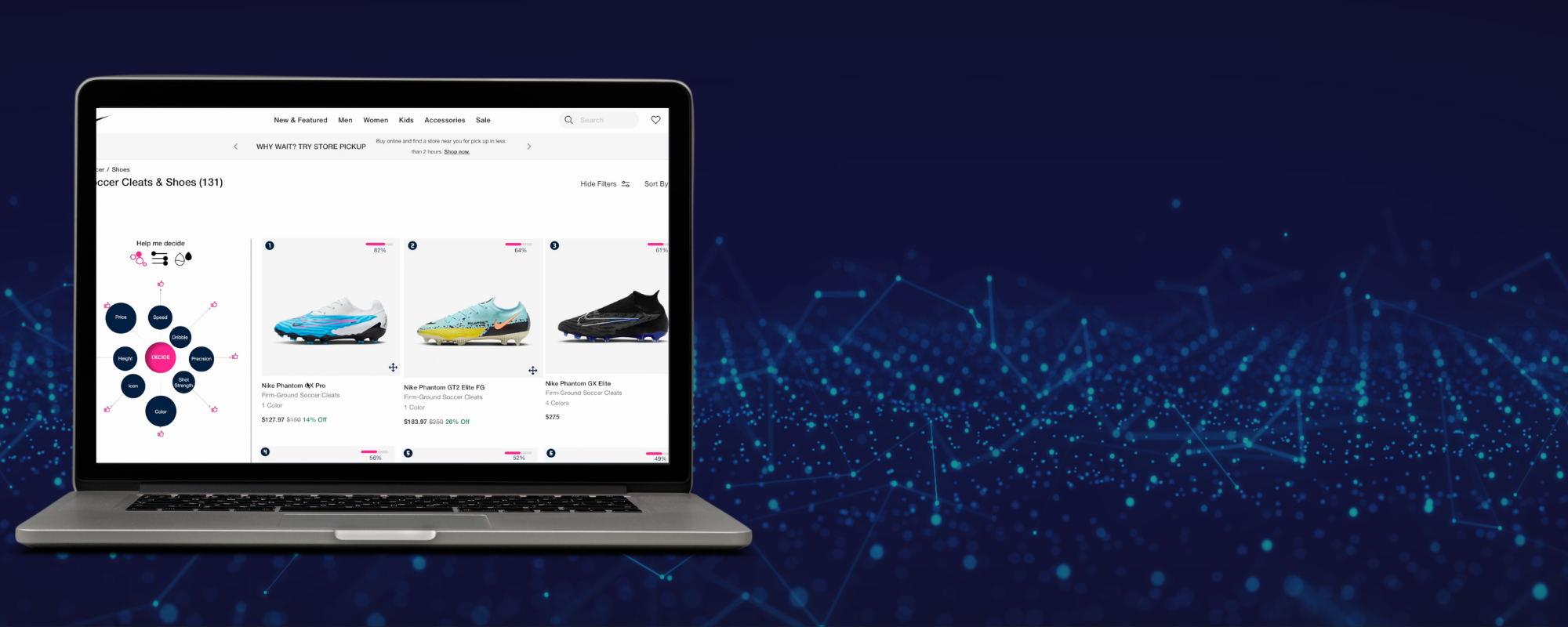
July 10, 2024
Q&A: Fadi Micaelian, CEO of Sparkdit, Is Transforming AI Decision-Making by Incorporating Tradeoffs
Sparkdit’s personalized recommendation engine weighs tradeoffs to generate user recommendations. Their technology allows users to classify the importance of different factors in their selection process and then ranks recommendations based on how compatible they are with a user’s tradeoffs rather than using a predictive model or process of elimination. Sparkdit currently works in the retail, aerospace, security, financial services, and healthcare industries.
Data Catalyst Institute: Sparkdit offers artificial intelligence (AI)-augmented decision-making software. What does that mean, exactly, for a typical person? What are the most notable applications of this technology?
Fadi Micaelian: The foundation of AI is based on the principle that a person’s behavior is similar to that of others in the same statistical cluster or who are close neighbors. Our fundamental belief at Sparkdit is that each individual has a unique DNA and thus behaves differently. That’s what makes people unique in their own ways. Hence, there’s a need to individualize and personalize AI answers for every individual.
AI works marvelously when the data is abundant. However, humans can still function in the absence of AI. As a matter of fact, over the years, we’ve built a breadth of expertise and made a slew of inventions without any data. Einstein did not send a twin at the speed of light to measure the difference in age with the twin that stayed on earth; it all happened without a single shred of data, applying rigorous logic with a dash of imagination, independent of data. Imagine the power of combining data-driven artificial intelligence with expert knowledge. This is what we call Decision Intelligence, combining AI with expert knowledge.
Our innovation has many applications, starting with the ability to double the conversion rate of an eCommerce recommendation engine without intruding on customer privacy. A group of doctors is using our technology to redesign the way they interact with their patients, centering the patients in treatment selection by accounting for their preferences (i.e., surgery vs. chemotherapy, in-patient vs. out-patient, etc.), yielding more satisfactory outcomes.
DCI: What are the biggest challenges and roadblocks to integrating this technology in business-to-consumer (B2C) contexts?
FM: The main roadblock when introducing such a significant paradigm shift is changing the mentality of what people are used to. Many individuals are accustomed to traditional navigation tools and methods that may not always yield optimal results. Shifting a mindset towards embracing a new, more natural way of interacting with technology can be challenging, as people often resist change in their established workflows.
The introduction of AI technologies requires users to adapt to novel interfaces and navigation structures. This paradigm shift in user behavior demands reimagining how individuals interact with interfaces and engage with user experiences. For businesses transitioning to AI-driven solutions, ensuring end-users seamlessly adjust to these changes is crucial for successful adoption. Another significant challenge involves the inherent difficulty in expressing and quantifying tradeoffs, especially when individuals make the tradeoffs subconsciously. This ambiguity can impede effective communication and understanding of preferences.
Maximizing the benefits of AI-driven solutions in B2C contexts requires a comprehensive approach that considers not only technological capabilities but also user behavior, preferences, and communication strategies. Advancements in AI, such as the Sparkdit Inference Engine, address this challenge by reverse-engineering decisions and deciphering user tradeoffs. By providing insights into the causality behind decisions, businesses and consumers can better justify or understand their choices and articulate the impacts and implications of their decisions.
DCI: Your current Sparkdit use cases include retail search, healthcare predictions, and defense. Thinking about retail specifically, what are the most important problem(s) for shoppers that AI can help solve?
FM: Right now, 7% of visitors click on the recommendation engine in an eCommerce website. Yet those visitors are responsible for 31% of revenue, according to a 2023 study from Barilliance. Today, the best recommendation engines (Google and Amazon) are binary, i.e., they present the results but cannot engage the visitor to capture their goals, preferences, and tradeoffs.
In retail, Sparkdit’s augmented AI holds immense potential to address critical challenges faced by shoppers and enhance their overall shopping experience. One of the most significant problems for shoppers is the difficulty of finding relevant products or recommendations that align with their preferences, constraints, and tradeoffs. This lack of personalization often leads to missed opportunities to capture shopper interests and maximize revenue. Augmenting AI technologies to individualize recommendations can create a more tailored and engaging shopping experience.
Moreover, AI can play a crucial role in understanding and adapting to the ever-changing dynamics of shoppers’ lives. For instance, consider a scenario where a shopper’s purchasing behavior drastically shifts due to a recent life event, such as losing a job. Conventional algorithms may struggle to interpret such context changes, leading to inaccuracies in product recommendations. By synergistically incorporating human intelligence and AI, businesses can enhance their understanding of customers’ evolving circumstances and preferences, ultimately delivering more personalized and relevant shopping recommendations. The overall shopping experience and long-term customer loyalty are enhanced when businesses create a more customer-centric approach to retail–advanced algorithms combined with human insights are a great tool for that.
DCI: How does AI incorporate tradeoffs into its outputs? How do you know if the output (decision/recommendation) you receive from the model is “good”?
FM: Our platform mimics the way humans think. We universally consider a set of criteria when making decisions. Then, we apply a certain logic to each criterion, which we call criteria behavior, that reflects how we think about each criterion. Finally, we overlay on top of that a set of tradeoffs that are typically unique to each individual.
Tradeoffs are a foreign concept to AI and thus are not incorporated in AI. However, they are paramount to making a decision, especially when it comes to purchasing. How do we know the model is good? Simply put, look at the results: Sparkdit is boosting the conversion rate by a factor of 2X. The result speaks for itself.
DCI: To wrap up, what, if any, concerns do you have about federal, state, or even international (e.g., the EU) legislation or regulation of AI companies? How could this impact Sparkdit?
FM: There’s been lots of talk hinging on transparency and privacy. AI is data-hungry. It requires large quantities of data to train the system, test it, and monitor its training behavior by ensuring it does not shift with time. The temptation to capture consumers’ private data is tremendous in order to better train the system. Privacy is tied to the value society associates with human dignity. Privacy costs nothing, yet it can cost everything if stolen or misused.
The good news is that our solution does not intrude on consumer privacy. If you are buying shoes, Sparkdit does not need to know how often you fill your gas, where you sleep, or what yogurt you prefer. Sparkdit uses exclusive characteristics of the shoe itself, and that information is publicly available.
For a PDF version of this Q&A, please see here.

